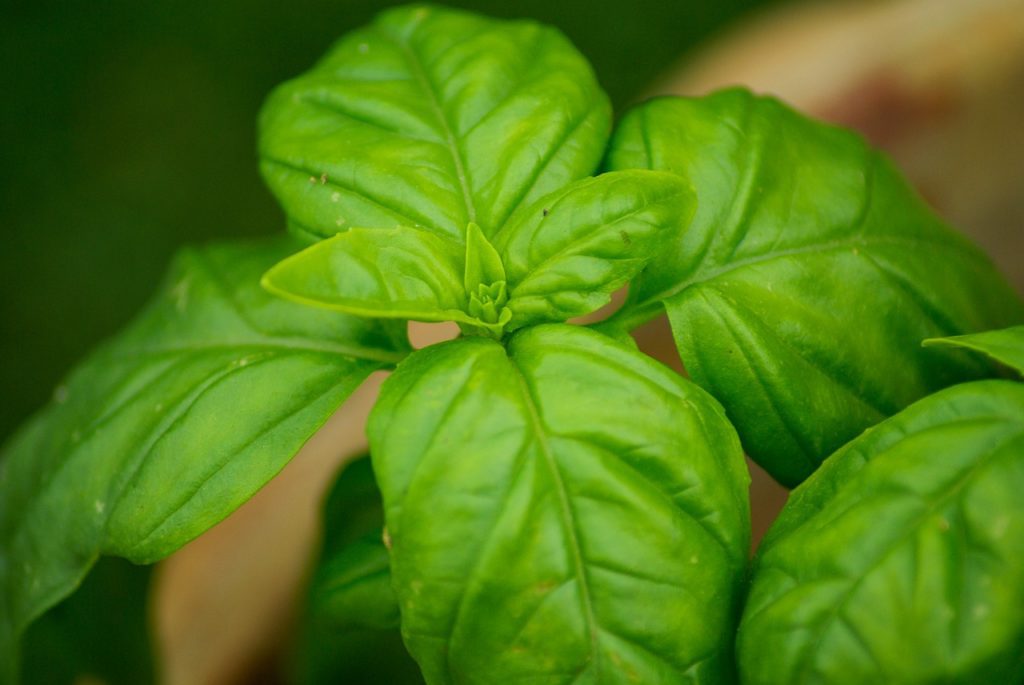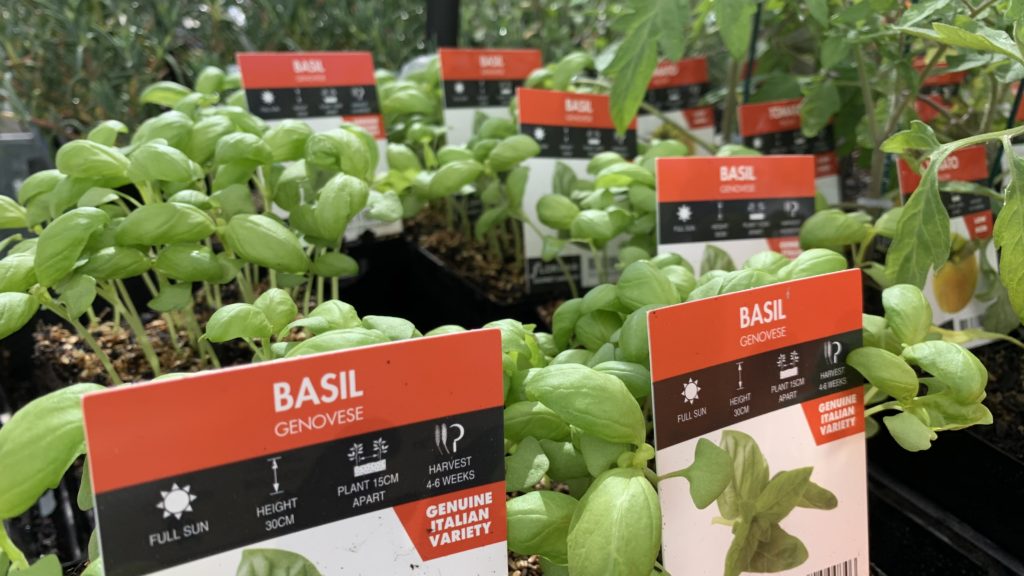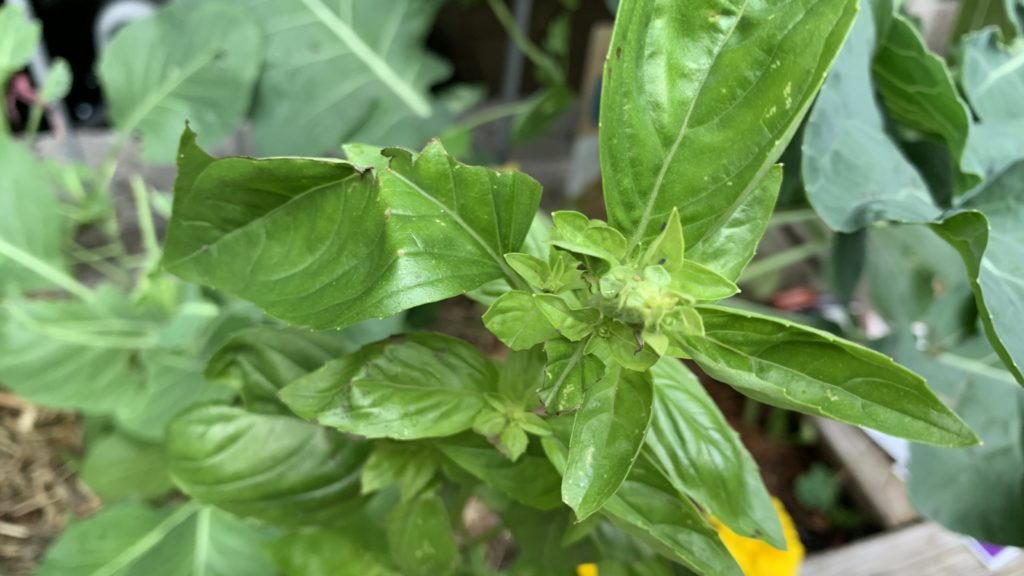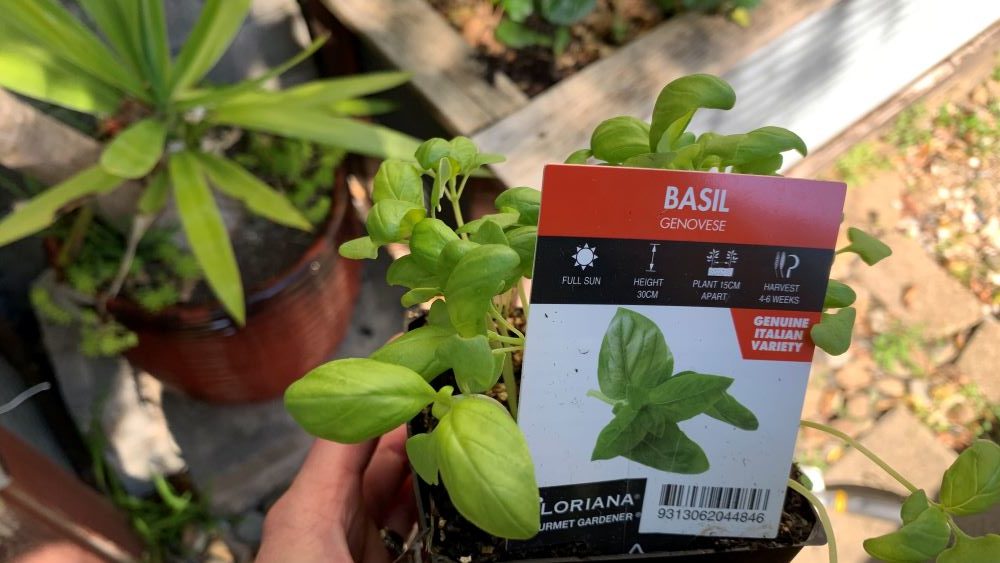Basil can turn blank when growing in the ground because of frost damage, leaf damage when pruning, pests such as aphids and thrips or fungal infection. Picked basil can turn black if the leaves are cut and they are exposed to air. The cut area will oxidize and turn black near the cuts.
Basil can turn black in your garden for a variety of reasons and this article will explore the main causes of this problem. There are easy solutions to each one so read on to find out why basil turns black and what to do about it

Why basil turns black and how to solve it
Here are my top reasons why basil turns black and what you can do to solve this problem in your garden at home.
Cold weather and frost damage
The most common reason that basil will turn black is die to a sudden cold change in weather. Rapidly cooling air temperature and frosts overnight can shock the plant turning the younger more delicate or exposed leaves black.
Basil are a warm weather plant so dislike cold nights and frost coverage. To prevent this from happening plant basil out into an area that gets frost protection like a greenhouse near a masonry wall. Do this when there is still the risk of frost in early spring and then after that the plant can be moved out to a sunny area.
Waiting until the chance of spring frosts has passed is also a great idea as you can plant your basil straight out into your garden bed. Basil loves full sun so waiting until later spring will prevent the frost damage that can happen early in the season.

Damage to the leaves
Damage to the basil leaves can cause the edges to go black. Pruning basil regularly is important but a cut through the leaves can expose the leaf edge to air, where it oxidizes and will turn black. This can look unsightly and the damaged leave will not repair itself.
To prevent this from happening use small, sharp secateurs to prune your basil. Removing the top 2 inches of basil every 2-3 weeks in the growing season is a great way to keep your basil growing bushy instead of growing flowers.
Carefully snipping the stem below the leaves will prevent leaf damage and the blackening that can happen when the leaf is cut.

Basil pest insects
The arrival of pest insects attacking basil can be another cause of black spots or marks on leaves. Look out for tiny green or brown aphids that will be sitting on the underside of the leaf or where the leaf joins the stem.
Tiny aphids will suck the sap from your basil and cause the damaged areas to go black. Make a dilute spray of dish soap and water and spray on the plant to drown the aphids out and use a hose the next day to wash it off your plant.
Slaters are another insect that likes to visit basil plants and nibble their leaves. Slaters are a beetle like insect that feeds on organic matter in the soil but are also tempted by new basil leaves. You will see holes in the basil leaves that will start to blacken around the edges.
The best way to prevent beetle or slater attack is to plant basil plants into your garden when they are at least 3-4 inches. This will make them taller, hardier and more resistant to pest attack.

Thrips and spidermite are other tiny insects that can attack the leaves of your basil plant turning them black. I like to treat areas of my basil affected by bugs by trimming them off. Water the basil well and it will quickly replace the leaves with new ones.
Use a hose to spray the plant thoroughly to remove spidermites or thrips that might be still attached to the remaining leaves. This is the best way to remove these pests from basil without the use of pesticides.
Basil Downey mildew & Bacterial leaf spot
Basil Downey Mildew can cause the leaves to go black underneath as parasitic organisms related to an algae that attack the leaf itself. This causes unsightly black marks on the leaf that cannot be repaired by the plant. Bacterial leaf spot will also cause black marks or spots on the leaves themselves.
Both problems can be treated with fungicides, either chemical or an eco choice however for me I prefer the cut and remove method. Trim back basil to remove all of the affected areas and throw the leaves in the bin.
Remove old mulch, water the plant around the roots with a dilute, liquid nitrogen fertilizer and water the plant every 2-3 days. This will give the basil the best chance of recovery and the nutrients it needs to grow new leaves and stems to replace the old ones.
How to prevent basil turning black
The best ways to prevent basil from turning black are listed below. Each one will help you to keep your plants healthy and avoid the need to treat the plant after the damage has occurred.
Only water on the roots
Surround basil plants with straw or sugar cane mulch and always water around the roots zone and not on the leaves. Watering straight onto soil or the leaves can cause bacteria or fungi to splash up and make their way onto your plant.
Watering on the roots on top of mulch instead will prevent the soil from splashing around and spreading pests and fungus.
Plant them 8 inches apart
Giving basil plants the space they need to grow, get lots of air movement and avoid the transfer of pests can prevent leaves from blackening. Give the basil plants space to grow into large, healthy plants by giving each planting group around 8 inches of space between.
Basil plants will usually be grown in groups of 5-6 plants but allowing the space between groups will help to prevent leaves from blackening. This will reduce the risk of fungal growth which is increased when there is a lack of air movement between plants.
Plant in spring when frosts have passed
The final way to prevent leaves from blackening is to plant basil out when the chance of frosts has passed. Wait until later in spring when the weather has warmed to avoid a late frost settling on their leaves and turning them black.
For earlier basil in frost prone areas, plant them out into greenhouses or in a protected space under a pergola. These potted basil can then be moved out into a sunny area in late spring or planted out into garden beds.
Why does basil turn black? | Summary
Basil can turn black due to leaf damage from pest insects, fungal infection or cutting with secateurs. Prevention is the best way so keep your plants healthy and resistant to pests by mulching them with 2 inches of straw, adding a liquid fertilizer regularly and keeping them well watered.
Frosts are another key reason why basil will turn black so avoid cold snaps by planting your basil out into exposed areas later in the spring season. You will have loads of basil to eat in summer which will pair perfectly with home grown tomatoes.
Happy growing.
Basil
- Caterpillars Eating Basil | 12 Easy Solutions + Natural Recipe
- Best mulch for herbs | Basil, Parsley Rosemary + More
- Is basil a perennial? | Annual & Perennial Basil Comparison
- Can you plant basil and mint together?
- Growing basil with tomatoes | Complete Guide
- Can you plant basil and parsley together? | Grow Guide
- How deep do basil roots grow? | 8-12 inches + basil grow guide
- Leggy Basil Plants: How to stop basil going leggy
- Why does basil turn black? | Top 4 Reasons + Solutions
I am an accredited practicing dietitian, experienced gardener and a dedicated cook. I love writing and sharing my experience so you can learn from my successes and mistakes.
